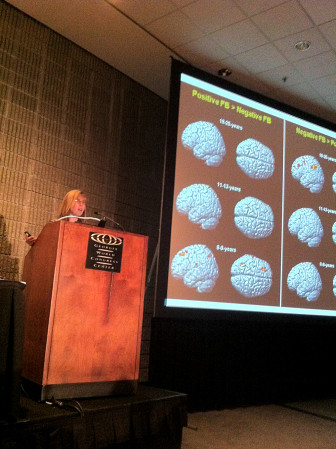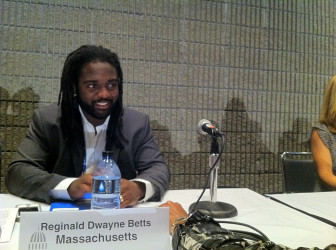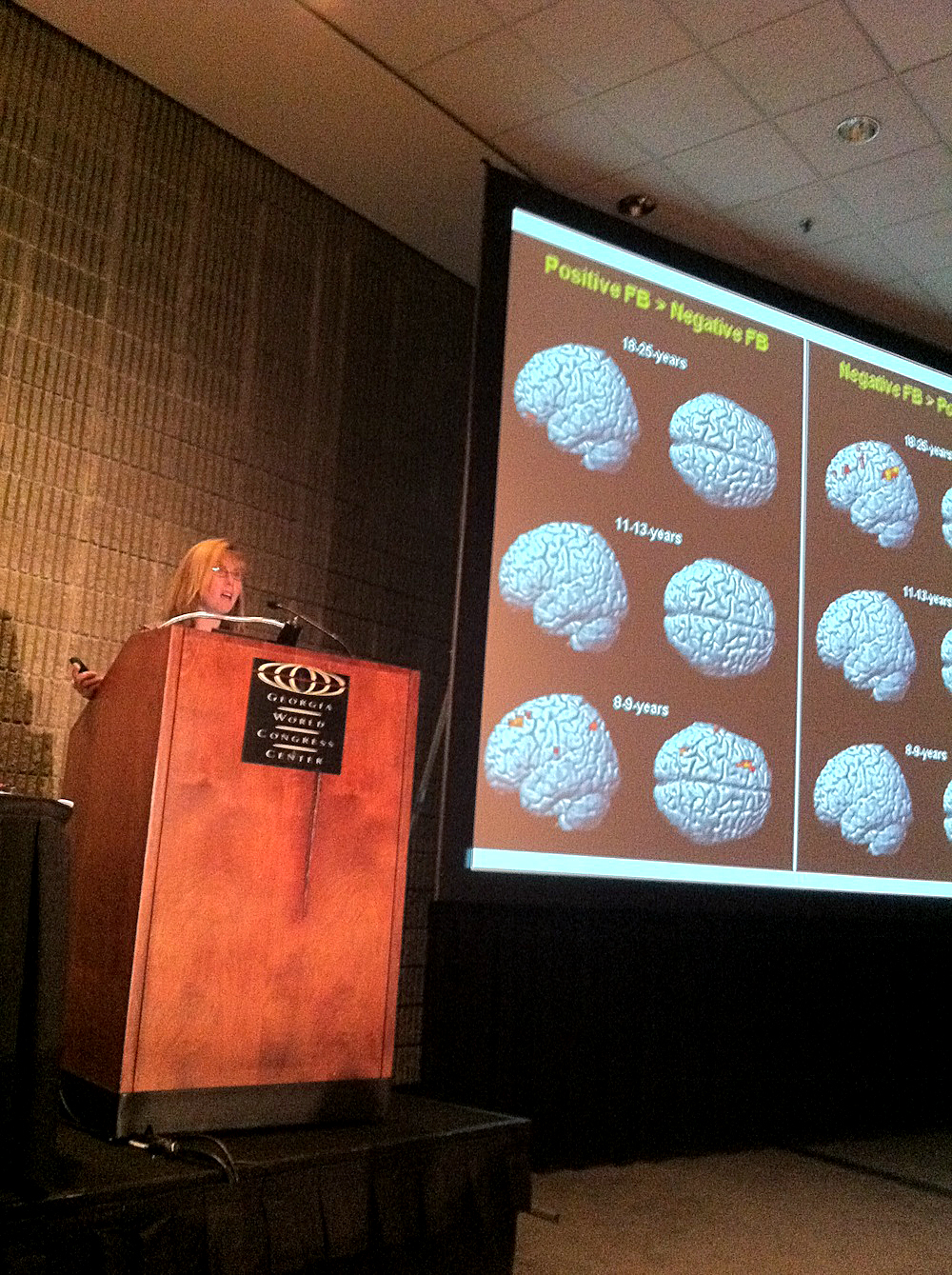
Maggie Lee / JJIE
Elizabeth Cauffman displaying images of brains in various stages of development.
“Why do most adolescents drive like they’re missing part of their brain? Because they are,” said Elizabeth Cauffman, professor of Psychology & Social Behavior and Education at the University of California, Irvine.
She was speaking to a group of state lawmakers, staff and others at a forum at the National Conference of State Legislatures summit in Atlanta on Aug. 14. The forum topic was using brain science to craft new policies.
The specific pieces that are missing can have much to do with judgment, impulse control and other behavioral aspects of interest to people who work with juveniles.
Physically, the prefrontal cortex — the part of the brain right behind the forehead — is not fully formed until about age 25. That’s the part that handles things like impulse control and emotion, Cauffman said.
According to her research, the brain is still pruning away indirect, inefficient paths among synapses. And those neural pathways are still growing the special cells that speed information among nodes. Additionally, dopamine, the chemical that contributes to happiness, is at its greatest circulation during the late adolescent years.
Georgia state Rep. Wendell Willard (R-Sandy Springs), the sponsor of the state’s 2013 juvenile justice code rewrite, put it differently. The human brain develops like an onion, Willard said, starting with a basic core of skills like seeing and hearing. And “the last to develop is judgment.”

Maggie Lee / JJIE
Reginald Betts, who at age 16 was sentenced to nine years in adult prison for a carjacking. He’s now en route to Yale Law School and criticizes the system that channeled him into adult punishment.
Author, essayist and spokesman for the Campaign for Youth Justice Reginald Betts fell into the juvenile justice system at the age of 16. The honors student and a friend were arrested for carjacking. Betts was immediately scared, and confessed within seconds of being arrested.
“I was automatically transferred to adult court,” said Betts. And treated like an adult during his nine-year sentence.
The young Betts, though he was already studying physics and calculus and was on the way to college, was still growing the part of his brain that governs emotions.
People know the difference between right and wrong just as well as adults by about the age of 16, according to Cauffman. In scientific terms, they are at near cognitive parity with an adult: they can understand what happens to them in court, for example.
But they can’t yet control their emotions and impulses, she said. That’s the underdeveloped prefrontal cortex.
Now Betts is on his way to Yale Law School, but he lamented that his judge, prosecutor, defense attorney and lawmakers lacked the “imagination” to see him as anything but a criminal.
He said he is still asked by every landlord if he has a criminal record and that Howard University turned him down because of his felony conviction as an adult.
Sealing records for youth offenses is something lawmakers nationwide might do well to look into, said Maria Schneider, assistant state attorney for the 17th Judicial Circuit of Florida.
In Schneider’s state, completing a diversion program can erase a young person’s criminal record. But an arrest can still be visible.

Maggie Lee / JJIE
“We had kids going on job applications who said they had no record,” said Schneider. But when employers order a Florida background check and see an arrest, they figure they are catching applicants in a lie, Schneider said.
“We don’t need to hold these kids back” if they are really reformed and rehabilitated, she said.
Schneider noted that for adults, we have a “penal” system, a system for punishment; and for youth, a rehabilitative system.
Maybe it would be worthwhile, she told the legislators, to have a conversation about a bigger part for rehabilitation, rather than punishment, when locking people away.
